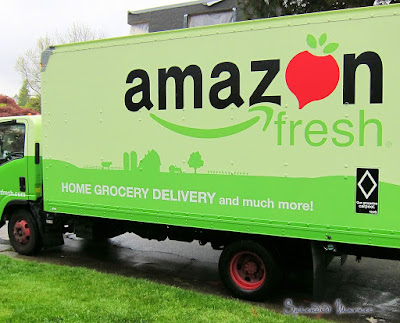After this story ran on Friday, Amazon appears to have made a handful of fixes to bugs highlighted below. The company declined to comment for this story and didn't respond to a request for comment Monday.
In mid-June, Dave Jackson bought a Frito-Lay variety pack through AmazonFresh for $10.44. When he returned to the Amazon mobile app soon after, it coaxed him to purchase more of the snacks through its "Buy It Again" feature.
But the very same variety pack under the "Buy It Again" banner didn't cost $10.44. It was $22.94.
The same thing happened after buying Snickers bars for 89 cents apiece on AmazonFresh, Amazon's grocery delivery service. Yet again, Amazon invited him to buy more, but for$4.95 each, more than five times the previous price.
What was happening?
Jackson, a web administrator in San Jose, California, believes he found a handful of bugs on Amazon after it recently combined the listings on its main website and on AmazonFresh. These potential bugs aren't just bothersome -- they could unnecessarily cost Fresh customers a lot more money if they don't pay close attention.
The issue points to just how complicated Amazon.com has become as the Seattle company pushes out new services and features to keep up its massive growth and maintain its position as the world's biggest online retailer. These days, customers need to navigate through products sold by Amazon itself, those from third-party retailers on its marketplace, Prime Pantry listings and now AmazonFresh listings.
The problem also provides another point of criticism regarding Amazon's pricing. The New York Times, for instance, has pointed out Amazon's sometimes misleading list prices and its dynamic pricing software that constantly changes prices.
Amazon declined to comment for this story.
Fresh is Amazon's spin on grocery shopping, providing fresh fruit, ice cream and other foods for home delivery for an annual membership fee of $299. The service is available in a handful of cities, including Seattle, San Francisco, New York, Boston and London.
Fresh used to have its own app (which Jackson regularly used), and its listings were separated from Amazon's main website on Fresh.Amazon.com. But earlier this year, Amazon started to remove that separation, shifting all of Fresh's listings to its main website and app and shutting down the Fresh app in the process. The change was completed in all Fresh cities a few weeks ago, according to Amazon.
And that's when Jackson, a longtime Amazon customer who signed up for Fresh three months ago, started noticing problems.
Apparently many Fresh products share the exact same product identification numbers and customer reviews as their counterparts on Amazon.com but have drastically different prices.
So, for now, instead of Amazon telling Jackson to repurchase a product through Fresh, it is instead offering up the same product on Amazon.com, in many cases at a much higher price.
"I totally understand these things happen," Jackson, 42, said in an interview. "I deal with web applications every day, but I'm surprised. It's just really messy. I expect better from Amazon."
Jackson noticed the same problem when looking through his order history. The history showed accurate prices for his Fresh purchases, but if he clicked through to a product page, it would show him the higher-priced Amazon.com listing instead of the Fresh one he bought.
The difference in price can be significant. For instance, Jackson bought a two-liter bottle of Diet Dr Pepper through Fresh for $1.67. But Amazon incorrectly linked him to the same bottle of soda for the inflated price of $12.95, sold by a third-party vendor on Amazon.com.
He wasn't the only one confused by this difference. Customers commenting about the Diet Dr Pepper listings debated among themselves over the price.
"12 dollars? Really?" one customer wrote.
"Geez, it's $1.25 people, calm down..." another responded.
Jackson alerted Amazon's customer service to the issue twice via email and had a chat session online with customer representatives, but without any resolution. He also called customer service three times about the price differences, only to be told that the issue likely involved Amazon continually altering its prices. In this case, it's not.
After his efforts with customer service, Jackson reached out to CNET, providing us with dozens of screenshots showing the price differences and potential bugs related to about a dozen different food items, from Quaker Instant Grits to C&H granulated sugar to Mug root beer. In each instance, the Fresh prices were lower, often by a lot.
Jackson said he wanted to highlight the issue to try to get Amazon to fix the problems, so people already paying $299 a year for Fresh don't accidentally end up overpaying for their food. He said he almost bought the higher-priced items several times, placing them in his shopping cart before catching the price difference.
"Not everyone's going to pay attention to those prices," he said.


No comments:
Post a Comment